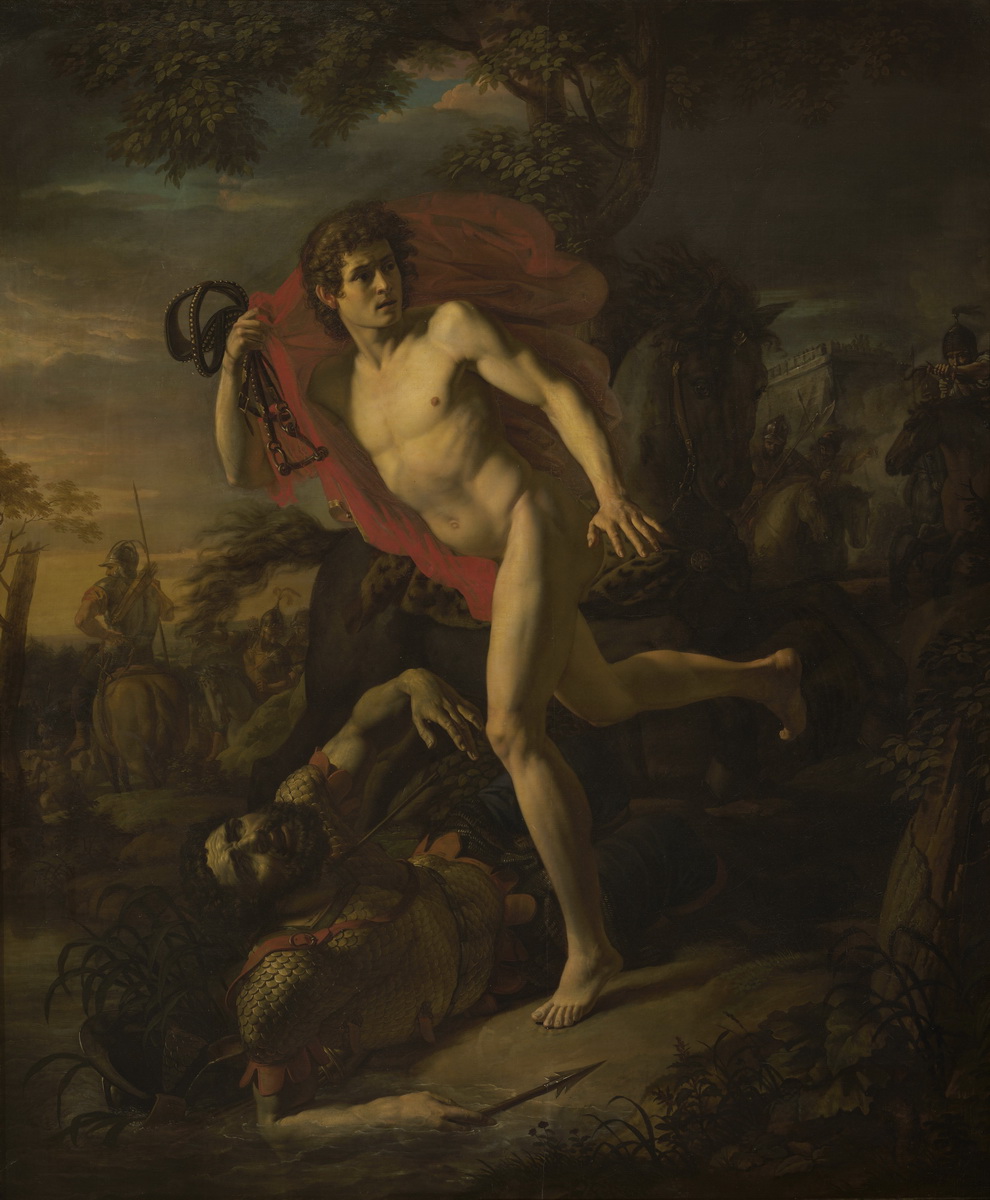


Сюжетом картины послужил один из героических эпизодов древней летописи. В 968 году, когда войско князя Святослава было в далеком походе, кочевники-печенеги осадили Киев. Герой картины – безвестный юный киевлянин. Зная язык печенегов, он прошел с уздечкой в руках через вражеский лагерь. Когда враги окликали его, юноша отвечал, что ищет убежавшего коня. Переплыв Днепр, он разыскал русскую дружину и привел её на помощь осажденному городу.
Подобно вихрю мчится герой через вражеский стан, и достигая Днепра — узкая полоска воды у нижнего края картины — как бы прислушивается к звукам погони. Стрела, пущенная вслед, поразила печенега, упавшего с коня и умирающего рядом на берегу. В глубине виднеются всадники и очертания городских стен. Момент, изображенный художником, конкретно и лаконично выражает идею произведения – ничто не способно остановить человека, отдающего себя патриотическому долгу.

The plot of the painting was taken from one of the heroic episodes of the old chronicles. In 968 when the troops of Prince Sviatoslav were in campaign the Pecheneg nomads besieged Kiev. The main character of the painting is an unknown young Kievan. Speaking Pecheneg language he had passed the enemy’s encampment holding a bridle. When the enemies called for him he answered that he was looking for the gone horse. Having swum the Dnieper he found the Russian troops and brought them to the besieged city.
The main character is rushing through the enemy’s encampment like a whirlwind. Having reached the Dnieper (a narrow strip of water at the bottom of the painting) he listened to the sounds of the chase. The arrow shot after him struck the Pecheneg who fell from a horse and lay dying near on the bank. In the background one can see the riders and outlines of town’s walls. The moment depicted by the artist expresses laconically and purely the idea of the work – nothing is going to stop the man who does his patriotic duty.
History painter, portraitist, draughtsman, iconpainter, lithographer, teacher. Studied at the Moscow Foundling Hospital (from 1778) and the Imperial Academy of Arts (from 1782). Awarded silver medals (1794, 1795) and first gold medal for Noah Offering a Sacrifice to God After Leaving the Ark (1797). Awarded first-class degree, fellowship and post of teacher of drawing at the Imperial Academy of Arts (1797). Nominated to the Imperial Academy of Arts (1800), academician of history painting for Adam and Eve Under a Tree After the Banishment from Paradise (1803). Assistant professor (1806), professor (1812), senior professor (1821). Member of the Free Society of Lovers of Writing, Science and Arts (1802).



